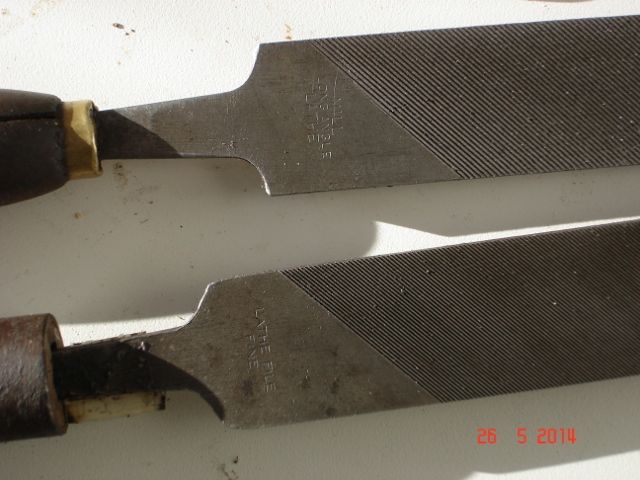It is taken as read that tool is on centre height, and everything is clamped firmly, and without play in the Cross Slide gibs, Topslide gibs and Headstock bearings?
If turning between centres, (unlikely over a 30mm length) the Tailstock could be off centre. (See later)
It could be that the lathe is mounted so that the bed is twisted.
If the latter, the lathe needs to be levelled, to remove the twist. To do this:
Either a sensitive level needs to be used at Headstock and then at the Tailstock end of the bed, or follow the procedure given on Page 42 of the Myford Series 7 Manual. Whatever method is used, the adjustments (possibly shimming the feet) need to be reiterated until the twist is removed by the level reading remaining unchanged, or the lathe turns parallel.
Heaven forbid that the Headstock is not aligned on the axis of the bed! Check this with a suitable alignment bar
(As large as possible diameter piece of Silver Steel may suffice; but measure the diameter at both ends before, just to be sure that it is parallel)
Clamp the Silver Steel in the chuck, (DO NOT TURN THE CHUCK) Mount a DTI in the Toolpost at centre height, and set to Zero at the headstock end. Wind the saddle to the tailstock end. The reading should still be Zero, assuming that the Silver Steel is the same diameter at both ends.
To check the tailstock alignment, you really need an alignment bar, that will fit between the centres on your lathe. A possible alternative is, again, a piece of Silver steel, (because it is likely to be parallel over its length) of the largest diameter that will pass through the Headstock mandrel, should be mounted in the chuck with as little protruding, as possible and centre drilled.
Turn the Silver Steel, end for end, and again with the least amount protruding from the chuck, centre drill.
You now have an Alignment bar! Mount it between Centres in the Headstock and Tailstock, without excessive force, but definitely without any play. Mount a DTI in the Toolpost, so that it is on Centre height, and set to Zero at the Headstock end. Wind the Saddle to the Tailstock end, and note the reading. Hopefully it is still Zero. If not, a + reading indicates that the Tailstock body needs to be moved, on its base, ( AWAY from you to give a Zero reading). A – reading needs the Tailstock to be moved TOWARDS you.
Return the Saddle to the Headstock, reset Zero and recheck at the Tailstock end. Repeat the checks and adjustments, until the DTI reads Zero at both ends. You should then be able to turn parallel between centres.
Hope that all this is not "Teaching Granny to suck eggs", and will be of some help in sorting the problem.
Howard
Ajohnw.


 Be better to keep the units the same. Either metric or imperial. An idea of the depth of cut would be good too.
Be better to keep the units the same. Either metric or imperial. An idea of the depth of cut would be good too.


